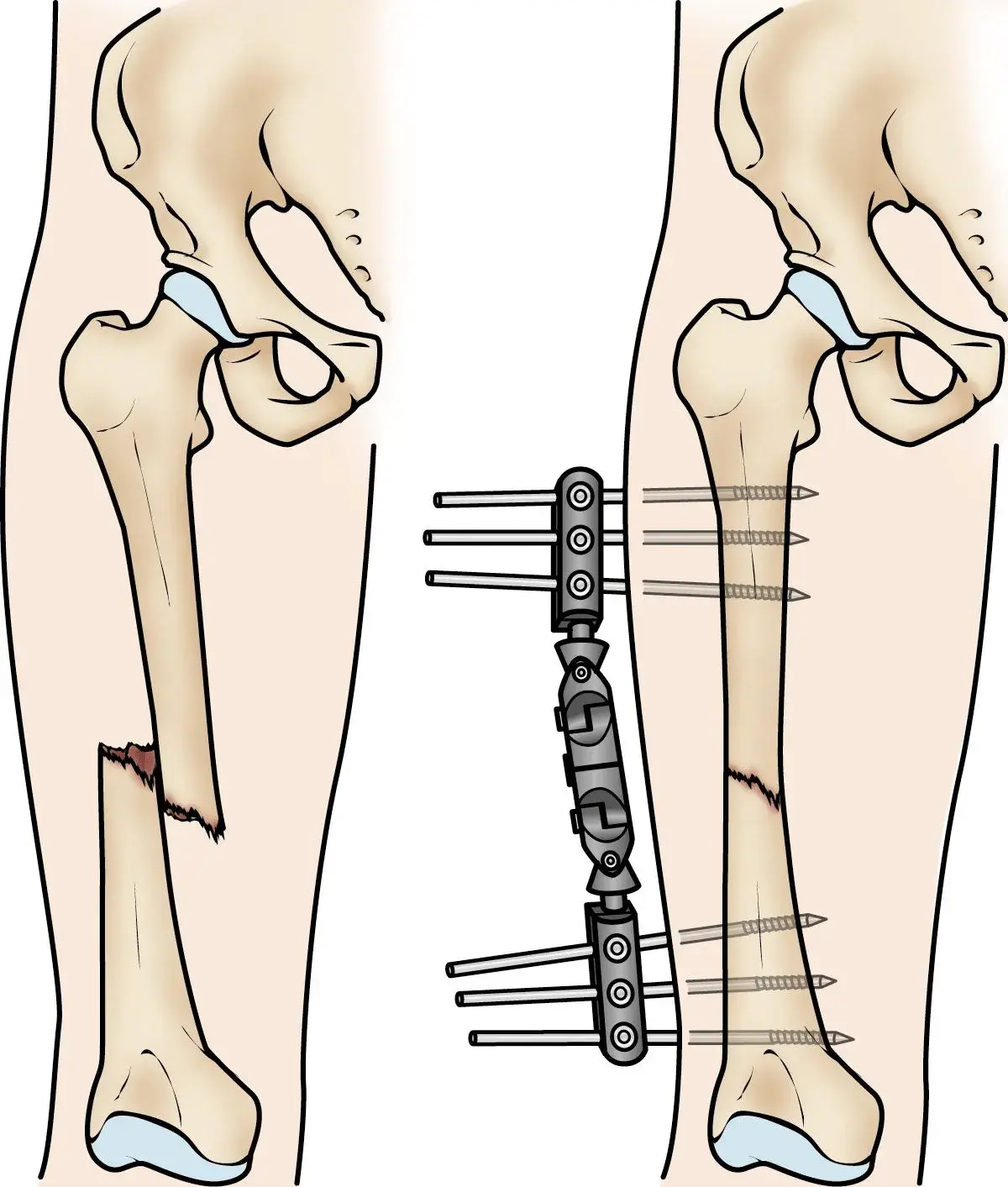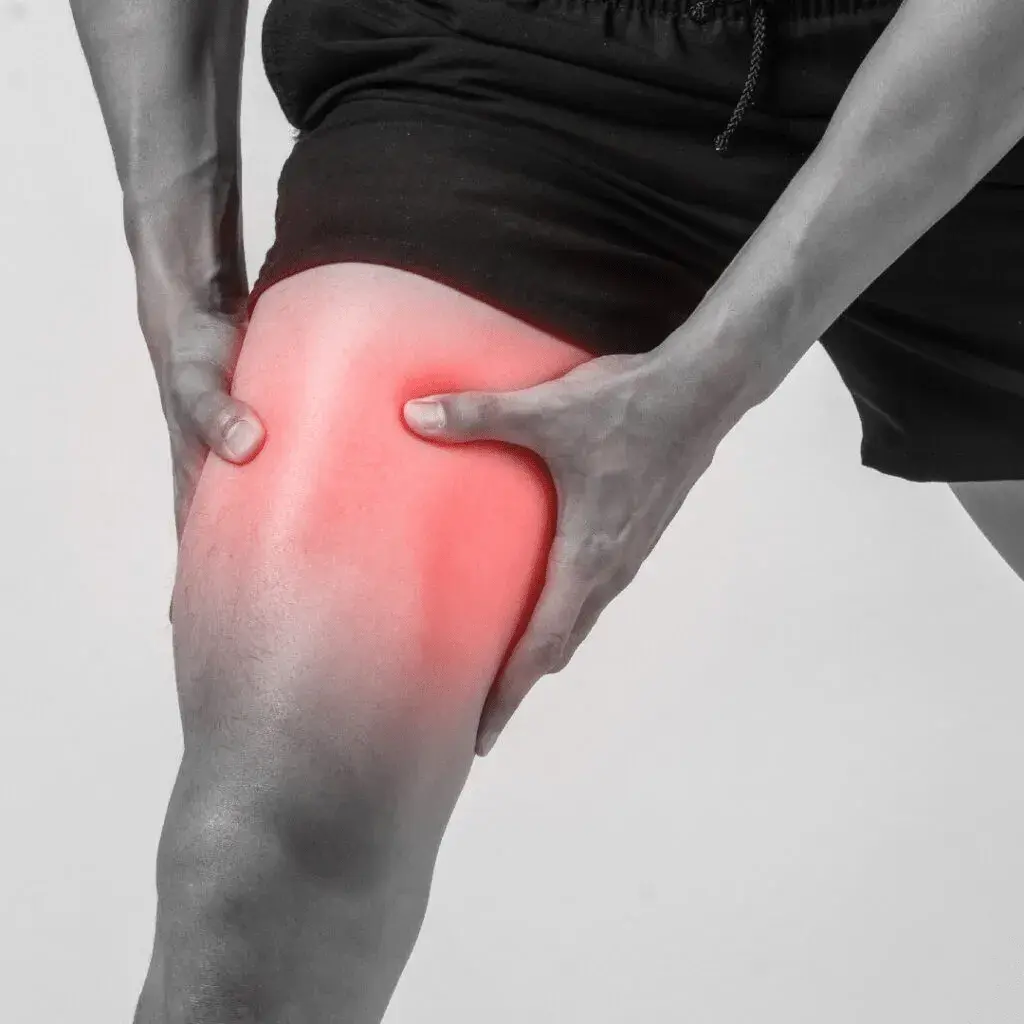A fracture in Femur, also known as a thigh bone fracture, is a common injury that occurs when the Femur is broken. A broken femur is a dangerous injury that has to be treated right away by a doctor. A car accident, falling from a height, or being shot can shatter your Femur. Femur breaks can usually occur in elderly adults who are prone to falling and suffering accidents. Treatment for broken femurs includes surgery and physical therapy. Your shattered Femur may need several months to recover. In this blog, we'll discuss the Fracture in femur causes, symptoms & treatments.
What is a Fracture in Femur?

A fracture of the Femur is a break in the bone that can range from a simple crack to a more serious break that requires surgical intervention. A high-impact injury, such as a car accident or a fall from a significant height, typically causes a femur fracture. They can also result from osteoporosis, a condition in which the bones become weak and brittle due to a lack of bone density.
Where is the Femur located?
The largest and most powerful bone in the human body is the Femur. It is located in the thigh and extends from the hip to the knee. The head of the Femur fits into the socket of the hip joint, and the lower end of the Femur connects to the tibia and fibula to form the knee joint. The Femur plays an important role in supporting the body's weight and allowing us to walk, run, and move. It is also an essential part of the skeletal system, which provides support and protection for the body's organs.
Also Read: 8 Exercises & Stretches for Tailbone Pain Relief Quickly
Types of Femur Fractures:
Here are various types of Femur Fractures:
- Femoral neck fractures
- Intertrochanteric fractures
- Shaft fractures
- Distal femur fractures
- Stress fractures
Different types of femur fractures determine symptoms, complications, and optimal treatment methods.
What are the causes of femur fracture?
There are several causes of a fracture in the Femur, including:
1. Trauma
A direct blow or impact to the thigh can cause a fracture.
2. Osteoporosis
Osteoporosis condition weakens bones, making them more susceptible to fractures.
3. Cancer
Tumors in the bone can weaken it and lead to a fracture.
4. Overuse
Repeated stress on the bone, such as from running or jumping, can cause a stress fracture.
5. Medical conditions
Certain conditions, such as Paget's disease and rickets, can weaken bones and increase the risk of fractures.
6. Accidents and falls
Falling from a height or accidents like a car crash can lead to femur fractures.
7. Medical procedures
Such as hip replacement surgery or radiation therapy, can lead to a fracture. A femur fracture can take up to six months to heal, even with the proper treatment.
Read Also:Radiation Therapy FAQ
What are the Femur Fracture Symptoms:

A fractured femur typically causes excruciating agony, deformity, and immobility in the leg. Typical signs include:
- Bruising or bleeding
- Leg malformation
- Having trouble moving the injured leg
- spasms of muscles
- tingling or numbness
- extreme pain
- Swelling
Serious Femur Fracture Symptoms:
A fractured femur is an emergency that, in extreme circumstances, might be fatal. If you or someone you are with has any of these life-threatening symptoms, including:
- Even momentary confusion or loss of consciousness
- Uncontrollable or significant hemorrhage
- not being able to move the leg
- reduced blood pressure (hypotension)
- Bone pieces that are poking through the skin are quite painful.
Also Read: What Causes Joint Pain in Cold: Try These 7 Tips To Get Relief
What is the Femur Fracture Treatment?
The list of femur fracture treatments may include:
1. Femur Fracture Surgery
Femur Fracture surgery is often required for displaced fractures or involving the joint surface. Surgery can involve the placement of pins, plates, or screws to hold the bone fragments in place while they heal.
2. Nailing
A rod is inserted into the Femur through small incisions. The rod is then secured to the bone with screws. This is done under general anesthesia.
3. Plating -
A plate and screws are used to hold the bone fragments in place. This is done under general anesthesia.
4. Cast immobilization -
For some types of fractures, a cast may be used to immobilize the leg and allow the bone to heal.
5. Physical therapy -
Physical therapy is important to recovery following a femur fracture. It helps to regain strength, flexibility, and range of motion in the affected leg.
6. Rehabilitation -
After surgery, a rehabilitation program is started to regain muscle strength and prevent blood clots formation. The choice of treatment will depend on the specific type of fracture, the location of the fracture, the age and overall health of the patient, and the patient's preferences. It is important to note that the healing process of a femur fracture can take several months, and recovery may be hindered by other factors such as smoking, poor nutrition, and lack of physical activity.
Read Also:Pain in Bottom Foot: Causes, Treatments and When To Visit a Doctor
Complications related to Femur Fracture-
Femur fracture may result in significant and even life-threatening complications. The chance of infection increases if the fracture has exposed the skin. Extreme bleeding from wounds could cause shock or a circulatory collapse. Poor fracture healing can lead to deformity, disfigurement, or the requirement for additional surgery. By sticking to the treatment plan you and your healthcare provider created for you, you can reduce your risk of experiencing major consequences. Femur fracture complications include:
- Anemia
- chronic discomfort or pain
- Deformity
- Infection
- Long-term impairment
- Numbness
- Paralysis
- Shock
- Venous embolism
Also, Read: Top 5 Treatments for Facial Paralysis
Recovery Time for Broken Femur with Rod
A broken femur stabilized with a metal rod typically takes 3-6 months for full recovery. Factors like age, injury severity, and therapy impact how quickly patients regain mobility and leg strength after femur rod surgery.
Final Takeaway -
Reducing the fracture is the process of repositioning the shattered bone fragments such that they are in their normal anatomical location. The precise treatment strategies are dependent on the circumstances of each case and must consider the extent and kind of the break as well as the care of any associated injuries. Femur fractures are serious wounds that require a long time to recover from. You might think that your recovery won't be complete. You can start to experience stress and annoyance. Even worse, you might decide to try to hasten the healing process and have a setback. To help you stay on track, discuss resources with your healthcare physician.
Also Read: Foot Stress Fracture Test: Symptoms, Diagnosis And Treatment
Frequently Asked Questions
How serious is a fractured femur?
A fractured femur is a very serious injury that often requires surgery and extensive rehabilitation.
Can you walk with a femur fracture?
No, a femur fracture prevents the ability to walk and usually requires using crutches or a wheelchair during recovery.
How long does fractured femur take to heal?
A fractured femur typically takes 3-6 months to fully heal depending on the severity and treatment.
What is the treatment for a fractured femur?
The main treatment for a fractured femur is surgery to stabilize the bone using plates, rods, screws or an external fixator.
What are 3 most important treatments in a fracture?
The 3 most important treatments for a fracture are immobilization to stabilize the bone, pain medication, and surgery if needed to reset the bone and promote proper healing.

Reviewed by







